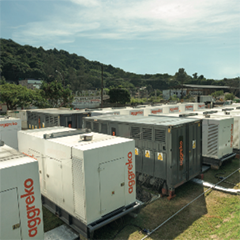In the past decade, significant progress has been made to move the world towards a cleaner era in electricity production. Investment in renewables and advancing technology has resulted in a decrease in the overall cost of generating renewable power.
In solar photovoltaic power, this decrease has been particularly marked. The cost of generation has plummeted by more than two-thirds, from 0.36USD/kWh to less than 0.1USD/kWh, according to the International Renewable Energy Agency (IRENA).
The growth of renewables has been rapid, with total capacity of solar PV alone skyrocketing from 15 GW in 2008 to 385 GW in 2017, according to IRENA. But it still only makes up a small percentage of the total energy mix, meaning the overall impact on carbon emissions so far has been limited. The industry still needs to overcome a number of hurdles to increase the prevalence of renewables.
Global challenges
The low capacity factor of renewables comparative to carbon-based energy sources is one such challenge. With onshore wind generating 30% and solar 18% according to IRENA, the energy output is far more limited than we see with other forms of supply. In comparison, coal-fired plants saw capacity factors of 57.1%, and nuclear power plants reaching 99.7% in the US in January 2019, according to the US Energy Information Administration.
Some renewable sources, such as hydro and geothermal, can provide consistent supply of energy, Others, namely wind and solar, are not as reliable. This intermittency is a significant barrier to adoption as the need for consistency outweighs the demand for greener solutions. This challenge is greater when we assess security of supply on a very short-term basis, such as clouds limiting exposure of sunlight to solar panels.
The CAPEX investment needed for the installation of renewable energy, whether that is wind turbines or solar panels, is often an even bigger obstacle. In many parts of the world the cost of capital is much higher than in OECD countries. Wind and solar energy projects are comparatively small, often making the cost of financing prohibitive, even when public money is available. In the case of battery storage in particular there is an awareness that technology is likely to continue to advance, and sometimes a corresponding reluctance to invest in infrastructure that might soon be out of date. Energy needs may also evolve over time, increasing the perceived risk among energy providers to adopt current technologies.
As a result of these challenges, growth of renewables is not equally distributed. Africa has less than 10% of the renewable capacity of Europe, according to the latest data from IRENA. Although growth in capacity in some developing countries, notably in China, continues to outpace their European counterparts, there is still a long way to go toward equal distribution of renewable technologies.






























